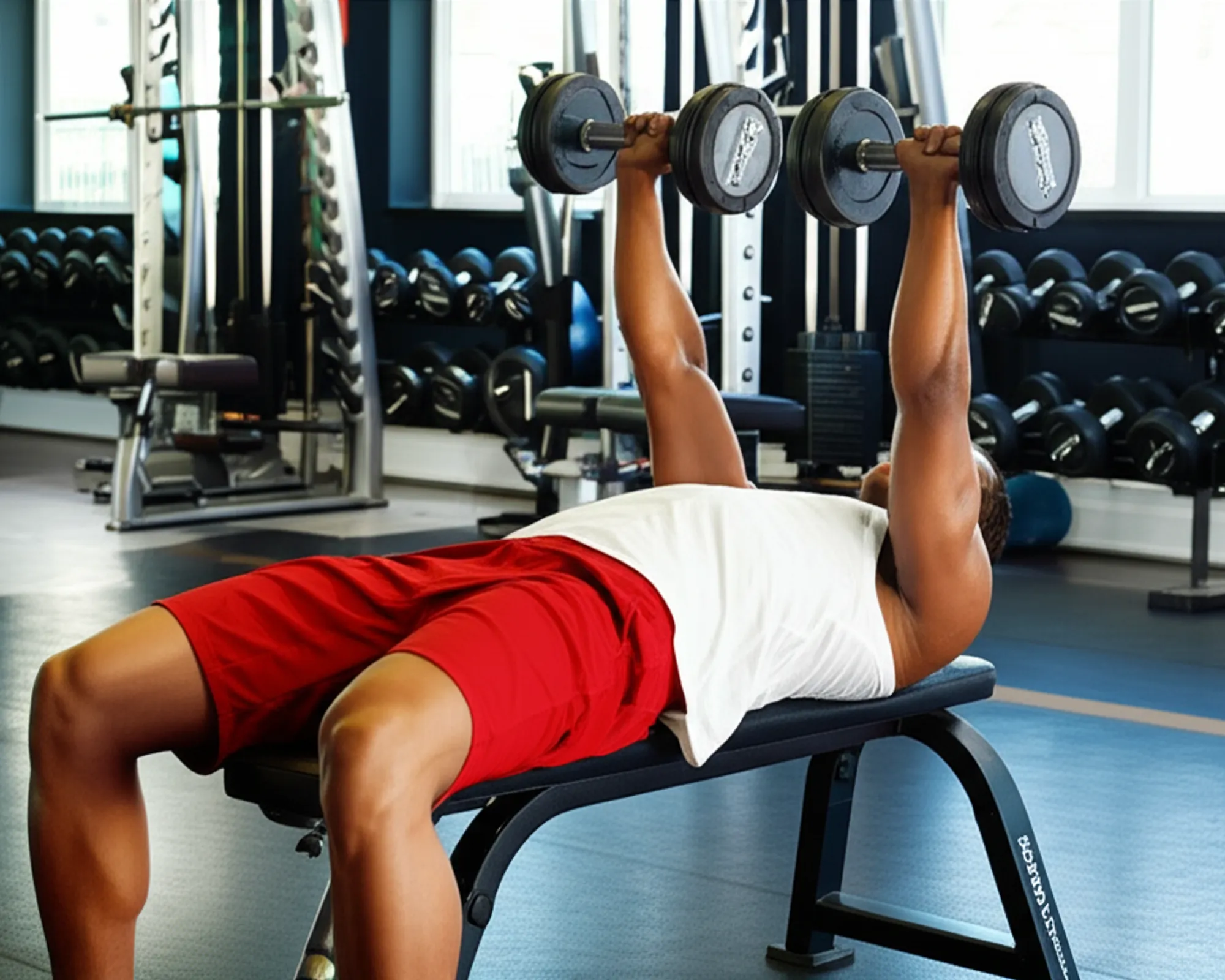How to Avoid Injuries in the Gym

The gym is a fantastic place to build strength, improve cardiovascular health, and boost your overall well-being. However, without proper precautions, it can also be a hotspot for injuries. From minor sprains to more serious strains and tears, gym-related injuries can derail your fitness journey and lead to prolonged recovery times. The good news is that most of these injuries are preventable. By adopting smart habits and understanding the principles of safe training, you can enjoy all the benefits of your workouts without the unwelcome setbacks. This comprehensive guide will walk you through the essential strategies to help you avoid injuries and maintain a consistent, healthy fitness routine.
1. The Foundation: Warm-Up and Cool-Down Are Non-Negotiable
Often overlooked, a proper warm-up and cool-down are critical for preparing your body for exercise and aiding recovery. A warm-up, typically 5-10 minutes of light cardio and dynamic stretches, increases blood flow to your muscles, raises your core body temperature, and improves joint mobility. This prepares your muscles for the demands of your workout, making them more pliable and less susceptible to injury. Think of it as gently waking up your body. Conversely, a cool-down (5-10 minutes of light cardio followed by static stretches) helps bring your heart rate down gradually, reduces muscle soreness, and improves flexibility. Skipping these vital steps is akin to driving a cold engine at high speeds – it's just asking for trouble. Incorporate them religiously into every workout.
2. Form Over Everything: Master Your Technique
This is perhaps the single most important piece of advice for injury prevention. Ego lifting – lifting heavier weights than you can manage with proper form – is a fast track to injury. Poor technique places undue stress on joints, ligaments, and tendons that aren't designed to handle the load in an awkward position. Before increasing the weight, ensure you can perform an exercise with perfect form for several repetitions. Don't hesitate to start with lighter weights or even just your body weight to nail the movement pattern. Watch instructional videos, use mirrors, and consider hiring a certified personal trainer for a few sessions to get personalized feedback on your technique. Prioritizing form not only prevents injuries but also ensures you’re effectively targeting the intended muscles, leading to better results in the long run.
3. Listen to Your Body: The Ultimate Guide
Your body provides constant feedback, and learning to interpret it is crucial. There's a difference between muscle fatigue and pain. Muscle fatigue, a burning sensation or general tiredness, is a sign of effective training. Pain, especially sharp, sudden, or persistent pain, is your body's alarm system. Do not ignore it. Pushing through pain can turn a minor ache into a serious injury. If something hurts, stop the exercise immediately. Rest, apply ice if needed, and assess the situation. Sometimes, a day or two of rest is all you need. Other times, it might indicate a need to modify an exercise, reduce the weight, or seek professional medical advice. Over-training, characterized by chronic fatigue, decreased performance, and persistent soreness, is also a sign that your body needs more rest and recovery.
4. Progressive Overload, Smartly Applied
Progressive overload is the principle by which you gradually increase the demands placed on your body over time, leading to adaptations like muscle growth and increased strength. While essential for progress, it must be applied intelligently. Rapidly increasing weight, volume, or intensity without allowing your body sufficient time to adapt is a common cause of injury. Aim for small, consistent increases. For example, add just 2.5-5 pounds to a lift, or one extra rep, rather than making huge jumps. Periodization – varying your training intensity and volume over cycles – can also help prevent plateaus and reduce the risk of overuse injuries. Consistency and patience are far more effective than trying to rush progress.
5. Fuel Your Body: Nutrition and Hydration
What you put into your body significantly impacts its ability to perform and recover. Proper nutrition provides the energy needed for workouts and the building blocks for muscle repair and growth. Ensure you're consuming adequate protein, healthy fats, and complex carbohydrates. Hydration is equally vital. Water plays a crucial role in joint lubrication, nutrient transport, and temperature regulation. Dehydration can lead to fatigue, muscle cramps, and reduced performance, increasing your risk of injury. Drink water consistently throughout the day, especially before, during, and after your workouts.
6. Inspect Your Equipment: Safety First
Before using any gym equipment, take a moment to inspect it. Check cables for fraying, pins for proper insertion, and benches for stability. If you notice anything that looks broken or unsafe, report it to gym staff immediately and do not use the equipment. Similarly, if you're working out at home, regularly check your own equipment for wear and tear. A faulty piece of equipment can lead to serious accidents.
7. Wear Appropriate Footwear
The right shoes can make a big difference in injury prevention, especially for exercises involving movement and heavy lifting. Running shoes are designed for impact absorption and forward motion, while weightlifting shoes offer a stable, flat base for heavy lifts. Cross-training shoes provide a good balance for varied activities. Wearing worn-out shoes or shoes not suited for your activity can lead to instability, poor balance, and injuries to your feet, ankles, knees, and even your back. Invest in good quality athletic shoes and replace them when they show signs of wear.
8. Don't Shy Away from a Spotter
When performing challenging lifts, especially with free weights like the bench press or squats, a spotter is invaluable. A reliable spotter can provide assistance if you fail a rep, preventing the weight from crushing you or causing a fall. Never attempt maximal lifts or lifts where you might fail without a spotter or safety racks. Communicate your intentions and number of reps clearly to your spotter before starting the set.
9. Embrace Variety and Cross-Training
Repetitive motions can lead to overuse injuries, where the same muscles, tendons, or joints are repeatedly stressed without adequate recovery. Introducing variety into your workout routine can help prevent these issues. Incorporate different exercises, change your rep ranges, or even try entirely new forms of exercise like swimming, yoga, or cycling. Cross-training helps develop a more balanced physique, strengthens stabilizing muscles, and gives your primary lifting muscles a break, reducing the risk of burnout and injury.
10. Know When to Seek Professional Advice
Despite all precautions, injuries can sometimes happen. If you experience persistent pain, swelling, limited range of motion, or suspect a more serious injury, do not self-diagnose or try to "work through it." Consult a medical professional – a doctor, physical therapist, or sports medicine specialist. Early diagnosis and appropriate treatment are crucial for a quicker and more complete recovery. They can also help identify underlying issues or imbalances that contribute to your injury risk.
Conclusion
Avoiding injuries in the gym isn't about being overly cautious; it's about being smart, informed, and respectful of your body's capabilities. By consistently implementing these strategies – warming up and cooling down, prioritizing proper form, listening to your body, progressing intelligently, fueling yourself correctly, checking your equipment, wearing suitable footwear, utilizing spotters, embracing variety, and seeking professional help when needed – you can significantly reduce your risk of injury. A consistent, injury-free fitness journey is a rewarding one, allowing you to achieve your goals and enjoy the long-term benefits of a strong, healthy body. Train smart, stay safe, and make your time in the gym a positive and productive experience.


